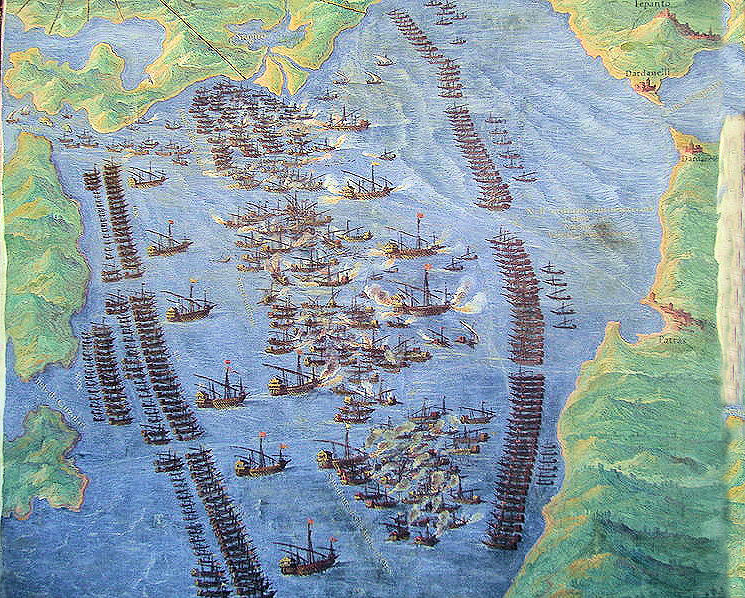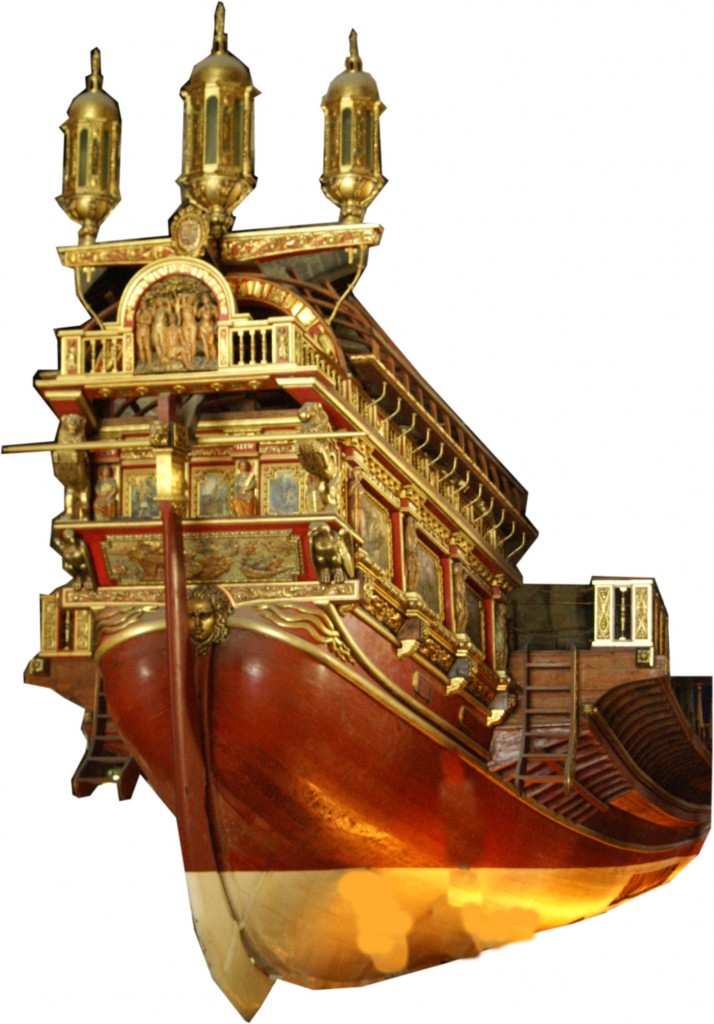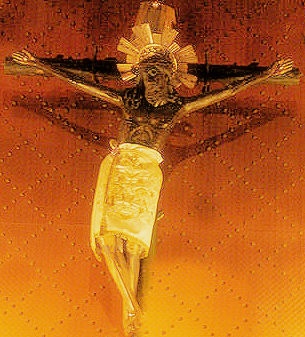Ali Pasha had disposed his fleet in an identical manner; he also spread out his right wing, composed of fifty-six galleys, towards the land, under Mahomet Scirocco. The left, formed of ninety-three galleys, also went to sea, under the orders of Aluch Ali; and in the midst of the centre division, formed of ninety-five galleys, a ship of Ali Pasha’s pressed forward, a very large one, with five high stanchions with five great gilded lanterns in the stern, and well supplied with artillery and with more than 500 men, Turks of Epacos, excellent archers and gunners who were the pick of his force.
Round her, to defend her, were seven galleys, the strongest and best that the Serasker Perter Pasha had. Behind the centre division, as in the allied fleet, were thirty galleys in reserve. The space between the ships was the same in both fleets, and the Turkish fleet stretched for over four miles. Therefore, the two armadas were each formed into three divisions, which each faced an enemy. That of Barbarigo was opposite that of Mahomet Scirocco; that of D. John of Austria was opposite that of Ali Pasha, and Gian Andrea Doria was facing Aluch Ali, the real and most redoubtable Captain of the Turks.
D. John’s visit had aroused enthusiasm among the galleys, and all preparations being made, they only waited for the signal of battle. The Generalissimo had also made his preparations on the “Real”; he ordered that the deck should be cleared as much as possible, in order to give plenty of room for fighting and for suitably posting the 400 veterans of the Cerdena regiment whom he had on board. He confided the defence of the platforms of the forecastles to the Field-Marshals D. Lope de Figueroa and D. Miguel de Moncada, and to Andres de Mesa and Andres de Salazar; the midships to Gil de Andrade; the kitchen to D. Pedro Zapata de Calatayud; the boat to Luis Carillo; the quarter-deck to D. Bernardino de Cardenas, D. Rodrigo de Mendoza Cervellon, D. Luis de Cardena, D. Juan de Gúzman, D. Felipe Heredia, and Rui Diaz de Mendoza; and as principal defender of the ship and true Generalissimo of the battle, he had hung up, in a wooden box, the Moorish crucifix rescued by Luis Quijada, which D. John always carried about with him.
From the stern D. John followed the manœuvres of both fleets, and, not to lose sight of them for a moment, he began to don his armour there, under the little awning of red and white damask which was at the door of his cabin; he put on a strong black coat of mail with silver nails; below the cuirass he wore the “piece of the True Cross,” the present of Pius V, and over the cuirass the Golden Fleece, as by the statutes of the order a knight should always wear it when he engages in battle.
 D. John had just finished arming himself when he noticed that Gian Andrea Doria had got too far ahead with the wing he was commanding, leaving a wide space between the left and the centre of the line; he also observed that Aluch Ali had followed the manœuvre of Doria with a parallel Turkish one with his left wing, and at once understood the strategy of the cunning renegade, who wished, and was succeeding in doing so, to separate the Christian right wing from the centre division, in order to surround them completely and cut them off. D. John hastened to send a frigate to Doria, to warn him of the trap into which he had fallen, and which threatened to cause the loss of the battle; but, unfortunately, it was too late, and the frigate had not time to cover the three miles which separated them from Doria.
D. John had just finished arming himself when he noticed that Gian Andrea Doria had got too far ahead with the wing he was commanding, leaving a wide space between the left and the centre of the line; he also observed that Aluch Ali had followed the manœuvre of Doria with a parallel Turkish one with his left wing, and at once understood the strategy of the cunning renegade, who wished, and was succeeding in doing so, to separate the Christian right wing from the centre division, in order to surround them completely and cut them off. D. John hastened to send a frigate to Doria, to warn him of the trap into which he had fallen, and which threatened to cause the loss of the battle; but, unfortunately, it was too late, and the frigate had not time to cover the three miles which separated them from Doria.
The Turkish fleet came on imposing and terrible, all sails set, impelled by a fair wind, and it was only half a mile from the line of galliasses and another mile from the line of the Christian ships.

Rev. Fr. Luis Coloma, The Story of Don John of Austria, trans. Lady Moreton, (New York: John Lane Company, 1912), Book III, Ch. X, pp. 263-265
Short Stories on Honor, Chivalry, and the World of Nobility—no. 668









